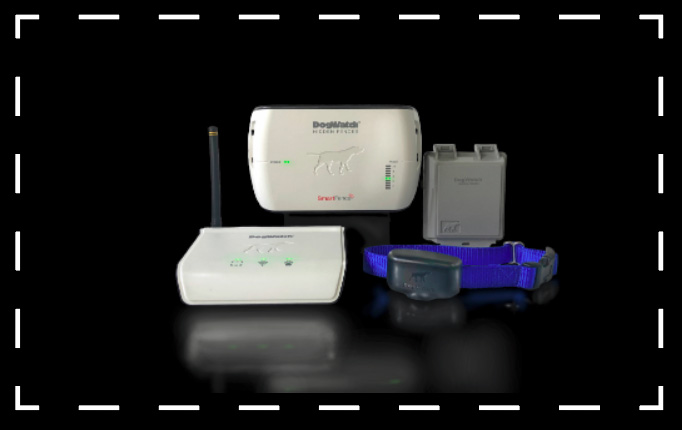Electronic cat collars are a wonderful way of keeping cats inside. They work equally well to keep cats inside an outdoor perimeter as well. Here we look at the effectiveness of electronic cat collars.
When we refer to electronic cat collars at Hidden Fence, we are really talking about a total containment system that includes an electronic fence and a receiver collar worn by your cat. Many people think that it is the receiver cat collar that does all the work when really it is the electronic boundary/ fence that does all the hard work to keep your cat safe.
In an indoor environment, you have the option of both wired cat fences and wireless cat fences to define the perimeter or zones permitted for your cat.
For example, a wired fence is perfect for bi-fold doors. The wire can be placed around the frame of the bifold door to determine the no go zone. The wire is attached to a transmitter. When your cat comes too close to the wire the transmitter sends a warning signal to the receiver worn on the cat collar. This is demonstrated in the diagram below. You will also notice flags in the diagram. During the training phase of installing an electric cat fence system, flags are placed as visual cues to teach your cat not to come too close to them. The addition of visual cues speeds up the training stage and gives your cat a point of reference when they receive the warning stimulation on their cat collar.

Does the transmitter send an electric shock to the cat collar?
The short answer to this question is no!. Cat collars and cat fences do not work in the same way an electric fence used on a farm to contain stock does. That type of system requires contact with an electrical circuit. Upon contact, the electric fence delivers a shock. Electronic cat fences send a wireless radio signal to a receiver worn on the cat collar. Your cat wears a receiver collar that receives the signal and activates a warning sound indicating proximity to the boundary. If your cat ignores the warning sound and proceeds to cross, then the cat receives a harmless electrical stimulation, influencing him to stay. Clearly, the delivery mechanism on our cat fences is very different to the more traditional electric fences, making them safe for your cat. This type of cat fence transmitter is connected to mains power but does not require contact to the circuit to activate the warning stimulus. It also comes with a fully adjustable range dial. A range of about a metre usually works quite well.
How do wireless transmitters work?
Wireless cat fence transmitters also send a wireless radio signal to the receiver worn on your cat’s collar. They will protect an area up to 3metres in diameter which makes them perfect for targeting specific areas such as couches, dining tables, fish ponds or pantries. The small disc-shaped transmitters are battery powered and come with a waterproof option, making them very versatile for placement in both indoor and outdoor settings.
Should a cat collar be worn all the time?
We recommend taking the cat collar off for a few hours each day to avoid pressure sores developing. Cat collars can cause pressure sores if the collar is worn too tightly for too long. Longer furred cats tend to be more susceptible although only about 0.05% of pets develop pressure sores, usually due to not following our recommendations.
If you need to contain your cat indoors a cat collar combined with a cat fence can definitely be the answer. Talk to us about the many options available.


